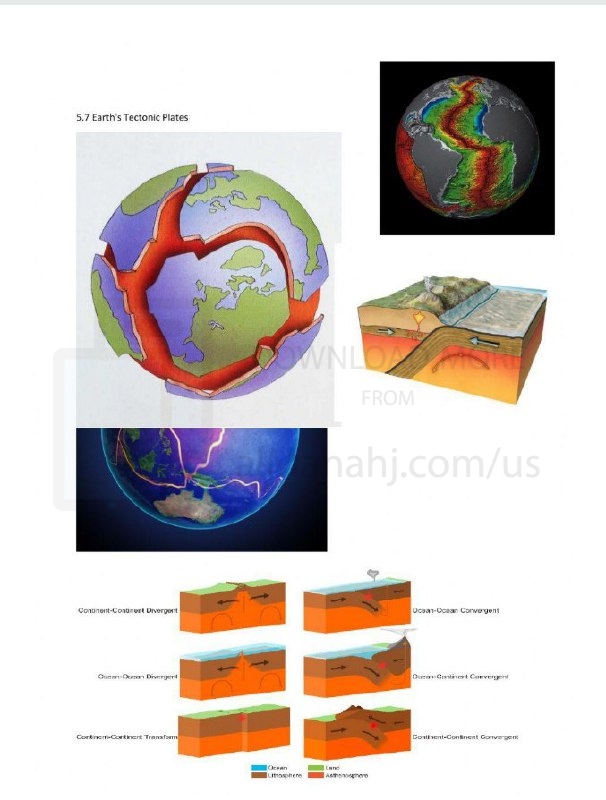| You are here: Almanahj Website ⇒ American curriculum ⇒ 7th Grade ⇒ Geology ⇒ Term 1 | ||
|---|---|---|
Worksheet about Earths Tectonic Plates | ||
|---|---|---|
| Subject: Geology | ||
| 7th Grade | ||
| Term 1 | ||
| Year: 2023/2024 | ||
| Size: 235.6KB | ||
| Number of clicks: 180 | ||
| Publish date:November 28, 2023 | ||
| Added by: Eman | ||
| Last download date: 2024-09-12 22:46:21 | By: theodor Grace Vogt | |
| File info: The Earth's tectonic plates are large, rigid pieces of the Earth's lithosphere that fit together like a jigsaw puzzle to form the Earth's surface. These plates are constantly moving, albeit very slowly, and interact with each other at their boundaries. The study of these plates and their interactions is known as plate tectonics. Here are some key points about Earth's tectonic plates: 1. Types of Plates: There are several major tectonic plates on Earth's surface, including the Eurasian Plate, African Plate, North American Plate, South American Plate, Pacific Plate, Indo-Australian Plate, and Antarctic Plate, among others. These plates cover the Earth's surface and are of varying sizes. 2. Plate Boundaries: The boundaries between tectonic plates are the areas where their interactions occur. There are three main types of plate boundaries: a. Divergent Boundaries: At divergent boundaries, plates move away from each other. This results in the upwelling of magma from the mantle, creating new crust and causing the formation of mid-ocean ridges. Divergent boundaries can also occur on land, resulting in rift valleys. b. Convergent Boundaries: Convergent boundaries are where plates collide with each other. There are three types of convergent boundaries: - Oceanic-Oceanic Convergence: When two oceanic plates collide, one is typically subducted beneath the other, forming a deep trench and often leading to volcanic activity. - Oceanic-Continental Convergence: When an oceanic plate collides with a continental plate, the denser oceanic plate is usually subducted beneath the continental plate. This can result in the formation of mountain ranges and volcanic activity. - Continental-Continental Convergence: When two continental plates collide, neither plate is subducted due to their similar densities. Instead, the collision leads to the formation of large mountain ranges. c. Transform Boundaries: Transform boundaries occur where plates slide past each other horizontally. These boundaries are characterized by large faults and can result in earthquakes. 3. Plate Interactions: The movement and interactions of tectonic plates are driven by mantle convection. Heat transfer within the Earth's mantle causes convective currents, which drag the plates along. It is at the plate boundaries where the effects of these interactions, such as earthquakes, volcanic activity, and the formation of mountain ranges, are most prominent. 4. Plate Movement: Tectonic plates move at a rate of a few centimeters per year, which may seem slow but has significant geological implications over millions of years. The movement of plates is measured and tracked using various techniques, including satellite-based measurements and GPS. The theory of plate tectonics provides a framework for understanding the dynamic nature of the Earth's surface. It explains the distribution of continents, the formation of mountain ranges, the occurrence of earthquakes and volcanic activity, and the recycling of Earth's materials. The study of tectonic plates and plate boundaries is crucial for understanding Earth's geology and the processes that shape our planet. | ||
| Downloading link Worksheet about Earths Tectonic Plates |
|---|
|
1701147674.pdf
The file is being prepared for download
|
| File images |
|---|
 |